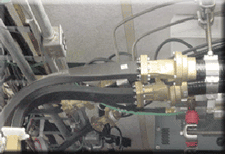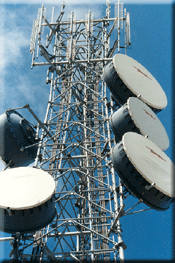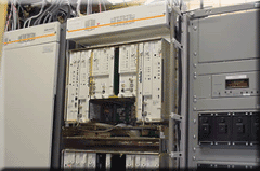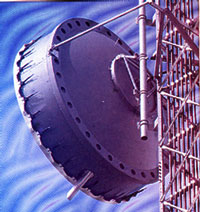
Installation Information
Microwave System Specialists
When it comes to installing a microwave system, only specially qualified personnel should be employed. There are special abilities, experience and equipment required to properly install a functioning microwave system.
 The most important factor is the experience and ability of the installation contractor. A contractor and its respective field technicians should have many years specifically installing, aligning and testing microwave. When installing a microwave link there are many things that have to be considered that a non-experienced crew would not know to address. Things such as polarity, antenna offset, waveguide plane, routing and future planning are all things that often don’t have to be considered when installing cellular or PCS systems. The most important factor is the experience and ability of the installation contractor. A contractor and its respective field technicians should have many years specifically installing, aligning and testing microwave. When installing a microwave link there are many things that have to be considered that a non-experienced crew would not know to address. Things such as polarity, antenna offset, waveguide plane, routing and future planning are all things that often don’t have to be considered when installing cellular or PCS systems.
Essential parts of a successful microwave installation include path alignment and sweep testing. Both of these require special experience and equipment. If the microwave radios are installed then a path can be aligned using many different procedures. Most radios have an “AGC” outlet that a simple volt-meter can be hooked up to and the voltage that is read directly correlates to the receive signal level. Most radios are now all software driven and the receive signal level can be read on a laptop plugged into the radio. Either of these methods is usually preferred due to the radios having higher output powers and more sensitive receivers than the other methods listed below. This gives  the installer more “dynamic range” to work with. the installer more “dynamic range” to work with.
Whether the radios are installed or not, other transmit/receive combinations can be used to path align. One such application is using what are called “path boxes”. These units consist of a transmitter, receiver and usually some sort of communication device to talk to the other aligner. They can typically transmit in a range of frequencies in several different commonly used frequency bands. These units do not usually have a very  strong transmitter but most oftentimes have a fairly sensitive receiver. They are typically attached directly behind the antennas and are operated directly by the technicians who are aligning the antennas. There is a digital readout that the technician can use to measure the receive signal level. A set of these boxes costs around $15,000. strong transmitter but most oftentimes have a fairly sensitive receiver. They are typically attached directly behind the antennas and are operated directly by the technicians who are aligning the antennas. There is a digital readout that the technician can use to measure the receive signal level. A set of these boxes costs around $15,000.
Another method, although very expensive, is to use specialized sweep and receive equipment. A typical piece that could be used as a transmitter would be an oscillator or synthesized sweeper. These units run from $25,000 and up. A receiver could be a simple power meter, $3,000, up to a spectrum analyzer that can cost $35,000 or more.
One final step is to sweep test the feedline that is installed. In the  case of coax installation, simple and inexpensive equipment can be used for this purpose. In the case of elliptical waveguide, much more expensive and specialized equipment is required. Some manufacturers make a microwave unit that is much more expensive than the PCS/Cellular test unit. However, most contractors continue to use more expensive equipment with the proper directional couplers and adapters for this application. This requires highly trained and experienced personnel to operate and interpret results. case of coax installation, simple and inexpensive equipment can be used for this purpose. In the case of elliptical waveguide, much more expensive and specialized equipment is required. Some manufacturers make a microwave unit that is much more expensive than the PCS/Cellular test unit. However, most contractors continue to use more expensive equipment with the proper directional couplers and adapters for this application. This requires highly trained and experienced personnel to operate and interpret results.
When selecting an equipment installer, ensure that they are certified to install and test the microwave radio manufacturer’s equipment.
 We recommend that you contact our valued microwave installation specialists to obtain additional information about their services, capabilities, experience and pricing. We recommend that you contact our valued microwave installation specialists to obtain additional information about their services, capabilities, experience and pricing.
|